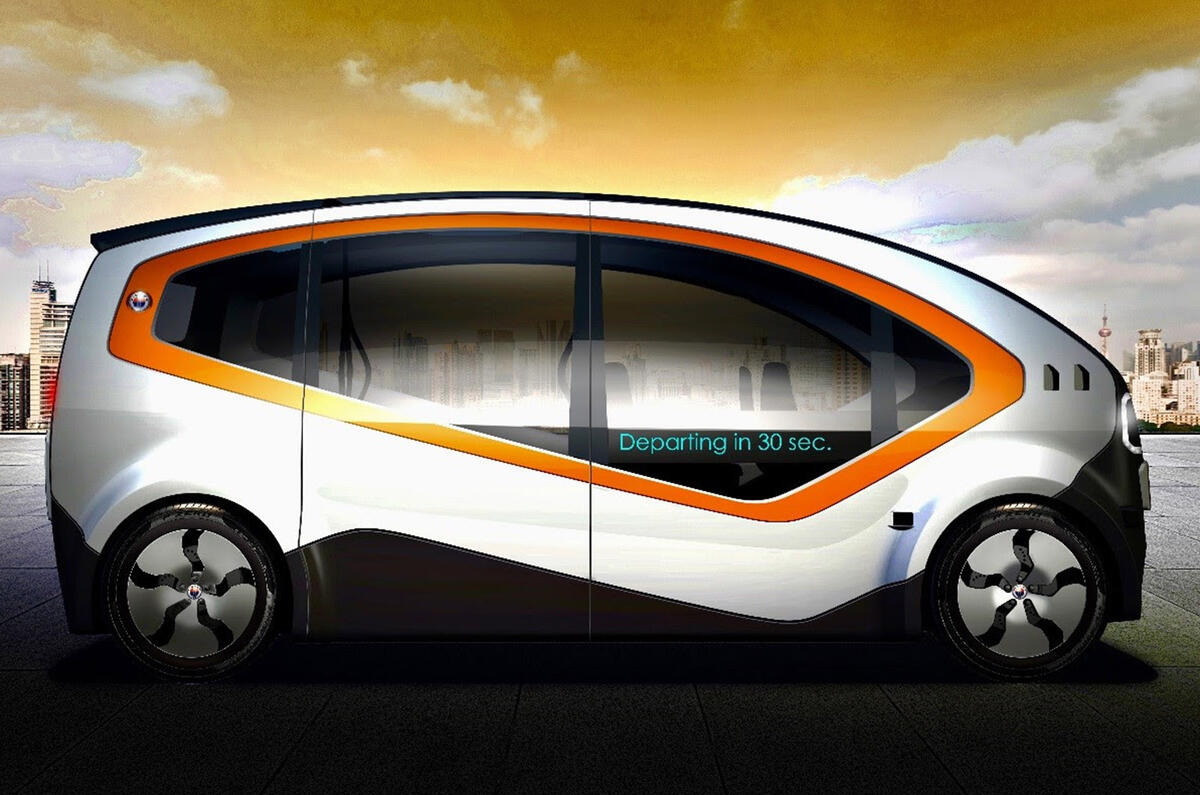Fisker has revealed its latest electric project: the Orbit, an autonomous shuttle bus with in-wheel motors.
The Orbit is designed for use in urban environments and can pick up passengers from their location, rather than a traditional bus stop. Rides are requested from an app on the passenger’s smartphone along set routes used by the shuttles.
The in-wheel motors used are the Protean Drive system, created by British tech company Protean Electric. Their application, combined with the autonomous capabilities of the shuttle, mean that passenger space is at a maximum compared with the shuttle’s size.
Protean’s system uses a permanent magnet and synchronous electric motor, giving each wheel 109bhp. The Orbit is likely to use two-wheel drive in most of its applications but is available in four-wheel drive. This means that powertrains with 218bhp or 436bhp are available.
Each motor also produces 922lb ft of torque, so the four-wheel-drive version of the Orbit could conceivably produce 3688lb ft of torque. However, the motors are likely to be toned down for their application in the Orbit, given its purpose.
Company founder Henrik Fisker said: “The Orbit already encompasses breakthrough automotive technology, design innovation and exciting touches that will change the way urban populations think about short-trip experiences.
“We selected Protean’s in-wheel powertrain technology to further deliver on those promises. The fastest path to fully autonomous vehicles is through shuttles like the Orbit, and we’re excited to lead the charge into the future of mobility with such world-class, sustainable technology.”
Passengers in the Orbit can pick different 'mood zones', although Fisker hasn't yet detailed what changes depending on the zone.
Testing of the Orbit will begin later this year and the first Orbit routes will be deployed in 2019.
Read more
Autonomous shuttle bus trial to commence in London
Chris Bangle Redspace electric city car - new pictures
Fisker Emotion revealed at CES with 400-mile range




Join the debate
Add your comment
Next article
My 10 year old drew a picture of a UFO type vehicle the other day, we plan to put in in production in 2020 too so can Autocar do an article on it please
So..........
In theory you could have loads of Orbits at busy times one behind the other,oh!, wait a minute, that’s just like aTrain!!!